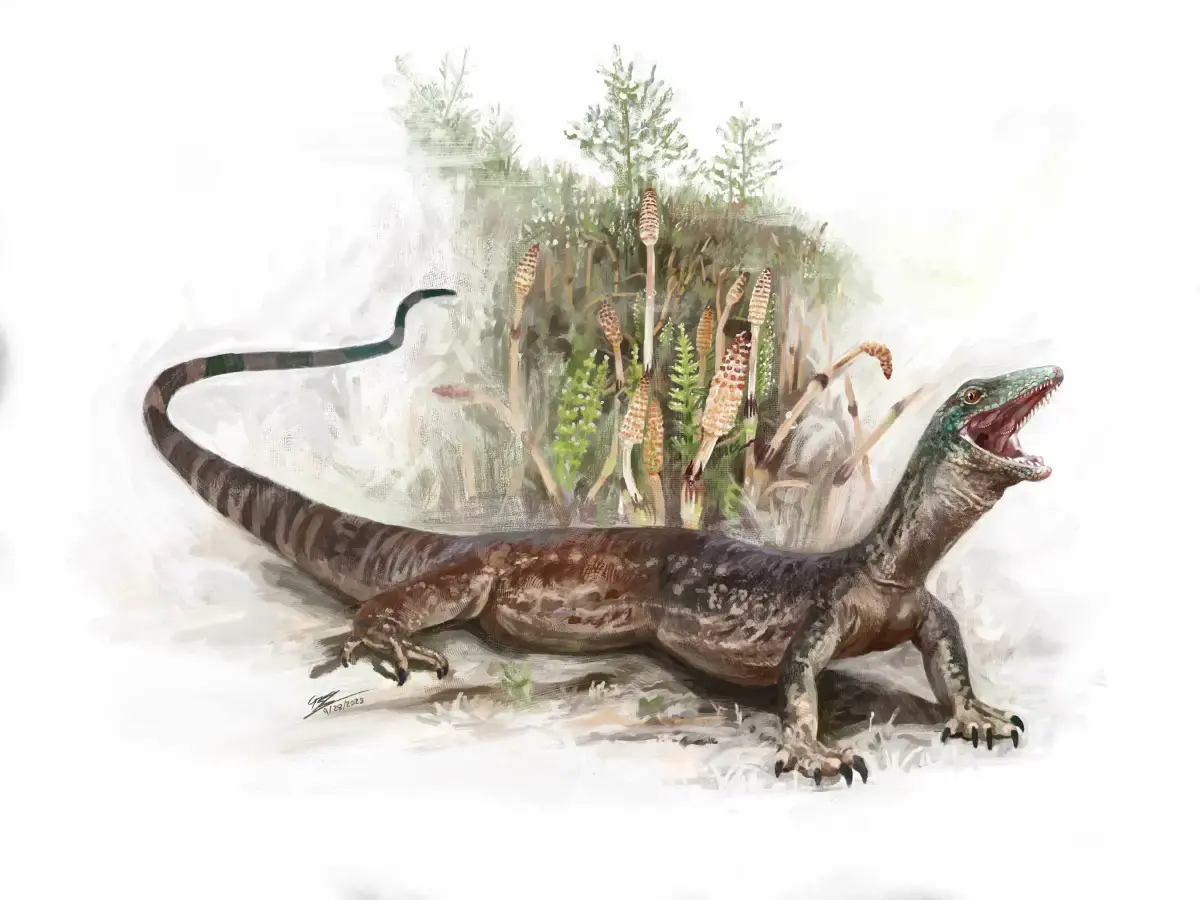
It’s a question worthy of Aesop’s fables: “How did snake lose its legs?” The discovery of a bizarre, sharp-toothed new lizard from 167 million years ago may help scientists find the real answer.
Researchers have unearthed a now Jurassic reptile with a confusing set of features that resembles both modern snakes and geckos—two very distant relatives.
This “false snake,” Breugnathair elgolensis, which lived in what is today Scotland, is challenging long-held ideas about snakes’ evolutionary paths.
The specimen, one of the oldest and most complete fossil lizards yet discovered, was described in a study published in the journal Nature by a multinational collaboration including the American Museum of Natural History, University College London, and the National Museums Scotland, France and South Africa.
The “False Snake of Skye”
Breugnathair elgolensis’s name translates to the “false snake of Elgol,” a reference to the village of the Isle of Skye, in Scotland, where it was found in 2016.
The reptile had a strange anatomical combination: “snake-like jaws and hook-like, curved teeth similar to those of modern-day pythons,” paired with the “short body and fully-formed limbs of a lizard.”
The perplexing mix of features is what makes the fossil so important, the researchers explained.
“Snakes are remarkable animals that evolved long, limbless bodies from lizard-like ancestors,” said paper author Roger Benson, a curator at the American Museum of Natural History’s Division of Paleontology, in a statement.
“Breugnathair has snake-like features of the teeth and jaws, but in other ways, it is surprisingly primitive. This might be telling us that snake ancestors were very different to what we expected, or it could instead be evidence that snake-like predatory habits evolved separately in a primitive, extinct group.”
Breugnathair has been placed in a new subgroup of extinct, predatory squamates—the group which lizards and snakes belong to—called Parviraptoridae.
An Unpredictable Evolutionary Journey
The process of studying the specimen was exhaustive. Researchers spent nearly a decade preparing the fossil, employing sophisticated techniques like computed tomography and high-powered X-rays before beginning their analysis.
“The Jurassic fossil deposits on the Isle of Skye are of world importance for our understanding of the early evolution of many living groups, including lizards, which were beginning their diversification at around this time,” noted paper co-author and paleontologist Susan Evans from University College London in a statement.
Evans, whose initial description of the Parviraptoridae group dates some three decades ago was based on partial remains, expressed her delight at the complete find. The discovery of the full specimen, she said, was like “finding the top of the jigsaw box many years after you puzzled out the original picture from a handful of pieces.”
She also emphasized that the reptile’s unique blend of old and new characteristics—the “mosaic of primitive and specialized features we find in parviraptorids”—serves as “an important reminder that evolutionary paths can be unpredictable.”
Measuring nearly 16 inches long from head to tail, Breugnathair ranked among the largest lizards in its ancient environment. It likely dominated its ecosystem, preying on creatures like smaller lizards, early mammals and even young dinosaurs. However, the exact evolutionary role of Breugnathair remains a mystery.
Given its unusual combination of traits, researchers couldn’t definitively conclude if it was a direct lizard-like ancestor of snakes. An alternative possibility is that Breugnathair was a precursor to all modern lizards and snakes that developed its snake-like jaws and teeth independently.
“This fossil gets us quite far, but it doesn’t get us all of the way,” Benson noted, which he added only makes the team “more excited about the possibility of figuring out where snakes come from.”
Do you have a tip on a science story that Newsweek should be covering? Do you have a question about the evolution of snakes? Let us know via science@newsweek.com.
Reference



